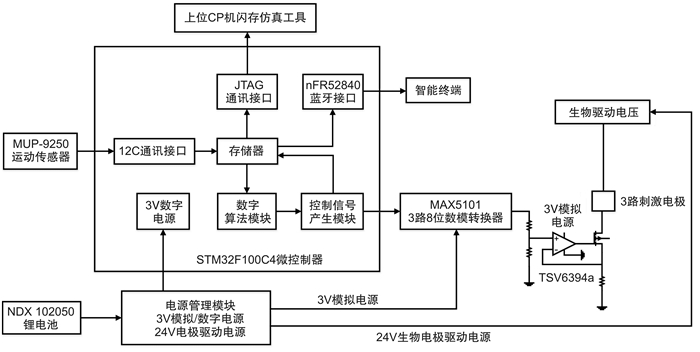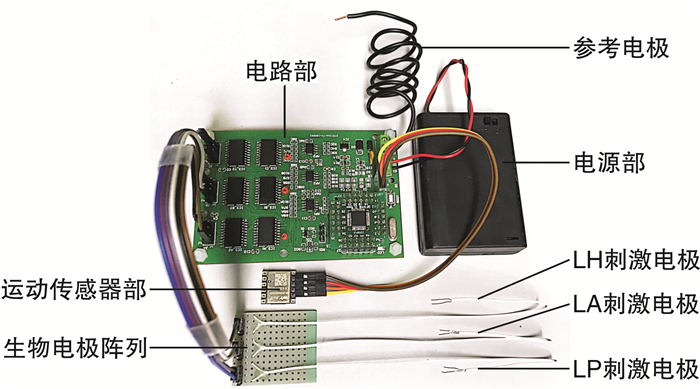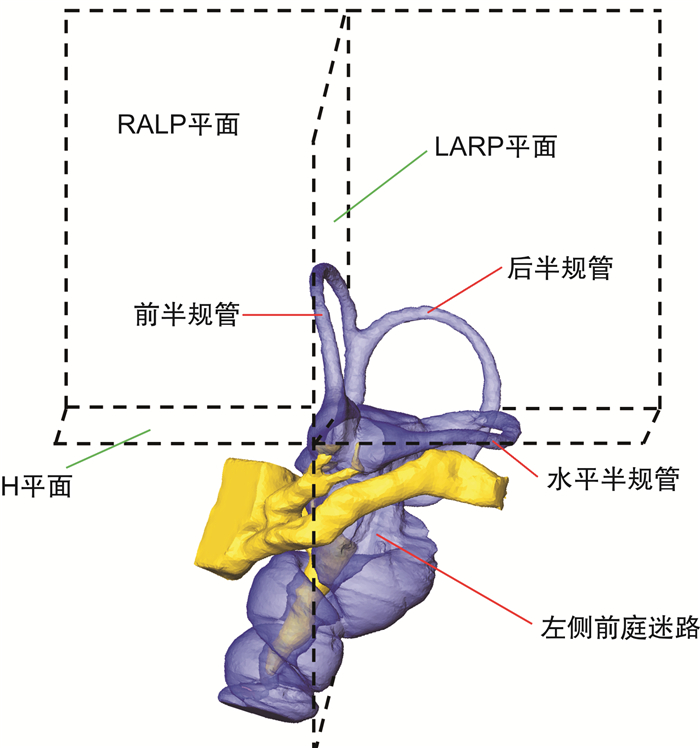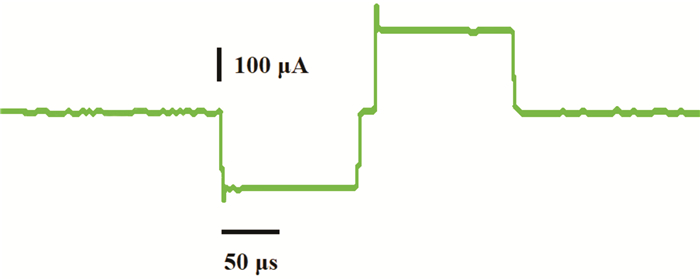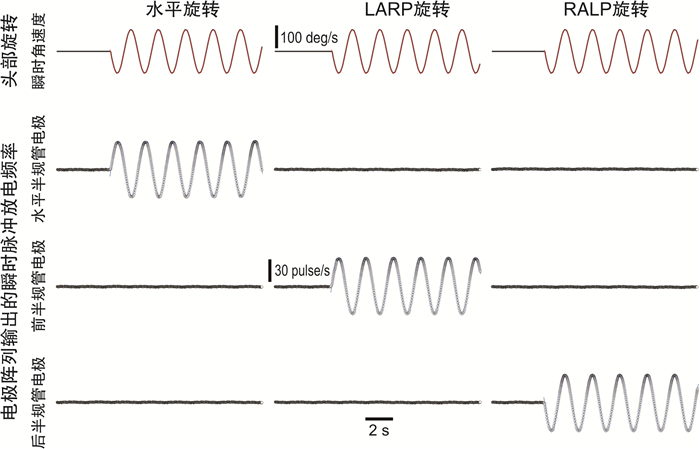The working principle and prototype construction of the Chinese vestibular prosthesis
-
摘要: 目的 完成具有自主知识产权的国产人工前庭工作原理设计及原型机构建,并验证其工作性能,为人工前庭临床推广应用奠定基础。方法 在既往研究的基础上,以前庭神经系统信息编码原则为核心,构建国产多通道人工前庭的工作原理,并依据该原理进行电路设计;选择合适电子元器件以及软件系统,构建国产多通道人工前庭原型机;通过性能测试,验证该原型机的输入、输出特性。结果 成功设计了国产多通道人工前庭工作原理框图,并依据此框图进行了工作原理的详细阐明;依据工作原理,设计并绘制了国产多通道人工前庭电路图,并依据电路图布局将所选的电子元器件以及软件系统有机组合起来,完成国产多通道人工前庭原型机的构建;性能测试实验表明,国产多通道人工前庭原型机各个刺激电极能够输出双相脉冲电流,能够感知空间旋转运动并且依据旋转运动数据输入调制输出的脉冲电流频率。结论 国产多通道人工前庭工作原理及电路设计合理;国产多通道人工前庭原型机构建成功,空间旋转运动感知输入及调制脉冲电流输出稳定且可靠。Abstract: Objective To complete the working principle design and prototype construction of the Chinese multichannel vestibular prosthesis (CMVP) with independent intellectual property rights, and verify its working performance, so as to lay the foundation for the clinical promotion and application of CMVP.Methods On the basis of previous research, the working principle of CMVP was constructed based on the information encoding principle of vestibular nervous system, and the circuit was designed according to the principle. Then, appropriate electronic components and software systems were selected to construct a CMVP prototype according to the design. Finally, the input and output characteristics of the CMVP prototype were verified through the performance test.Results In the present study, a block diagram of the working principle of the CMVP was successfully designed and drawn, and the working principle was explained in detail according to the block diagram. Further, the circuit diagram of the CMVP was designed and drawn based on the working principle, then the selected electronic components and software systems were combined one by one to complete the construction of a prototype. Finally, the performance test for the prototype was completed, which showed that all stimulus electrodes of the prototype could output biphasic pulse current, and the frequency of biphasic pulse current was modulated by the spatial rotation data input sensed by a motion sensor.Conclusion The working principle and circuit design of the CMVP are reasonable; the CMVP prototype in China has been successfully constructed; the spatial rotation motion sensing input and the modulated pulse current output are stable and reliable.
-

-
[1] Hatsopoulos NG, Donoghue JP. The science of neural interface systems[J]. Annu Rev Neurosci, 2009, 32: 249-266. doi: 10.1146/annurev.neuro.051508.135241
[2] Chow MR, Ayiotis AI, Schoo DP, et al. Posture, Gait, Quality of Life, and Hearing with a Vestibular Implant[J]. N Engl J Med, 2021, 384(6): 521-532. doi: 10.1056/NEJMoa2020457
[3] Perez Fornos A, Guinand N, van de Berg R, et al. Artificial balance: restoration of the vestibulo-ocular reflex in humans with a prototype vestibular neuroprosthesis[J]. Front Neurol, 2014, 5: 66.
[4] Perez Fornos A, Cavuscens S, Ranieri M, et al. The vestibular implant: A probe in orbit around the human balance system[J]. J Vestib Res, 2017, 27(1): 51-61. doi: 10.3233/VES-170604
[5] Strupp M, Kim JS, Murofushi T, et al. Bilateral vestibulopathy: Diagnostic criteria Consensus document of the Classification Committee of the Bárány Society[J]. J Vestib Res, 2017, 27(4): 177-189. doi: 10.3233/VES-170619
[6] Ward BK, Agrawal Y, Hoffman HJ, et al. Prevalence and impact of bilateral vestibular hypofunction: results from the 2008 US National Health Interview Survey[J]. JAMA Otolaryngol Head Neck Surg, 2013, 139(8): 803-810. doi: 10.1001/jamaoto.2013.3913
[7] Agrawal Y, Carey JP, Della Santina CC, et al. Diabetes, vestibular dysfunction, and falls: analyses from the National Health and Nutrition Examination Survey[J]. Otol Neurotol, 2010, 31(9): 1445-1450. doi: 10.1097/MAO.0b013e3181f2f035
[8] Agrawal Y, Carey JP, Della Santina CC, et al. Disorders of balance and vestibular function in US adults: data from the National Health and Nutrition Examination Survey, 2001-2004[J]. Arch Intern Med, 2009, 169(10): 938-944. doi: 10.1001/archinternmed.2009.66
[9] Kim S, Oh YM, Koo JW, et al. Bilateral vestibulopathy: clinical characteristics and diagnostic criteria[J]. Otol Neurotol, 2011, 32(5): 812-817. doi: 10.1097/MAO.0b013e31821a3b7d
[10] 张岩, 张鑫. 单片机原理及应用[M]. 北京: 机械工业出版社, 2015: 2-2.
[11] 任鹏宇, 高忠权, 韩鹏, 等. 人工前庭神经调控策略优化设计[J]. 临床耳鼻咽喉头颈外科杂志, 2020, 34(5): 389-398. https://www.cnki.com.cn/Article/CJFDTOTAL-LCEH202005003.htm
[12] Ren P, Li B, Dong S, et al. The reliability of nonlinear least-squares algorithm for data analysis of neural response activity during sinusoidal rotational stimulation in semicircular canal neurons[J]. PLoS One, 2018, 13(1): e0190596. doi: 10.1371/journal.pone.0190596
[13] Della Santina CC, Migliaccio AA, Patel AH. A multichannel semicircular canal neural prosthesis using electrical stimulation to restore 3-d vestibular sensation[J]. IEEE Trans Biomed Eng, 2007, 54(6 Pt 1): 1016-1030.
[14] Gong W, Merfeld DM. Prototype neural semicircular canal prosthesis using patterned electrical stimulation[J]. Ann Biomed Eng, 2000, 28(5): 572-581. doi: 10.1114/1.293
[15] 杨军, 张青. 眩晕外科手术图谱[M]. 北京: 科学出版社, 2020: 159-162.
[16] Smith PF. Bionic balance organs: progress in the development of vestibular prostheses[J]. N Z Med J, 2017, 130(1461): 56-65.
[17] Parkes WJ, Gnanasegaram JJ, Cushing SL, et al. Vestibular evoked myogenic potential testing as an objective measure of vestibular stimulation with cochlear implants[J]. Laryngoscope, 2017, 127(2): E75-E81. doi: 10.1002/lary.26037
[18] Wolter NE, Gordon KA, Campos JL, et al. BalanCI: Head-Referenced Cochlear Implant Stimulation Improves Balance in Children with Bilateral Cochleovestibular Loss[J]. Audiol Neurootol, 2020, 25(1/2): 60-71.
[19] Della Santina CC, Migliaccio AA, Hayden R, et al. Current and future management of bilateral loss of vestibular sensation-an update on the Johns Hopkins Multichannel Vestibular Prosthesis Project[J]. Cochlear Implants Int, 2010, 11 Suppl 2: 2-11.
[20] Hedjoudje A, Schoo DP, Ward BK, et al. Vestibular Implant Imaging[J]. AJNR Am J Neuroradiol, 2021, 42(2): 370-376. doi: 10.3174/ajnr.A6991
[21] Mulavara AP, Fiedler MJ, Kofman IS, et al. Improving balance function using vestibular stochastic resonance: optimizing stimulus characteristics[J]. Exp Brain Res, 2011, 210(2): 303-312. doi: 10.1007/s00221-011-2633-z
[22] Kammermeier S, Singh A, Bötzel K. Intermediate Latency-Evoked Potentials of Multimodal Cortical Vestibular Areas: Galvanic Stimulation[J]. Front Neurol, 2017, 8: 587. doi: 10.3389/fneur.2017.00587
[23] Wuehr M, Nusser E, Decker J, et al. Noisy vestibular stimulation improves dynamic walking stability in bilateral vestibulopathy[J]. Neurology, 2016, 86(23): 2196-202. doi: 10.1212/WNL.0000000000002748
[24] Serrador JM, Deegan BM, Geraghty MC, et al. Enhancing vestibular function in the elderly with imperceptible electrical stimulation[J]. Sci Rep, 2018, 8(1): 336. doi: 10.1038/s41598-017-18653-8
[25] Dakin CJ, Elmore LC, Rosenberg A. One step closer to a functional vestibular prosthesis[J]. J Neurosci, 2013, 33(38): 14978-14980. doi: 10.1523/JNEUROSCI.3221-13.2013
[26] Lee JY, Shin KJ, Kim JN, et al. A morphometric study of the semicircular canals using micro-CT images in three-dimensional reconstruction[J]. Anat Rec(Hoboken), 2013, 296(5): 834-839. doi: 10.1002/ar.22664
[27] Levakova M, Tamborrino M, Ditlevsen S, et al. A review of the methods for neuronal response latency estimation[J]. Biosystems, 2015, 136: 23-34. doi: 10.1016/j.biosystems.2015.04.008
-




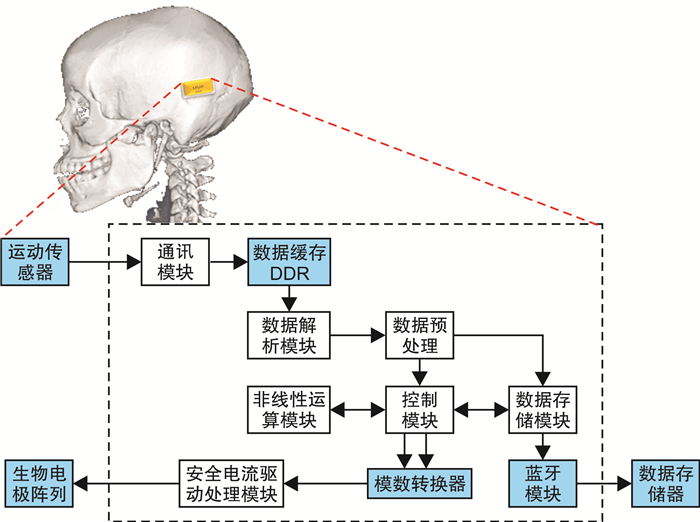
 下载:
下载:
